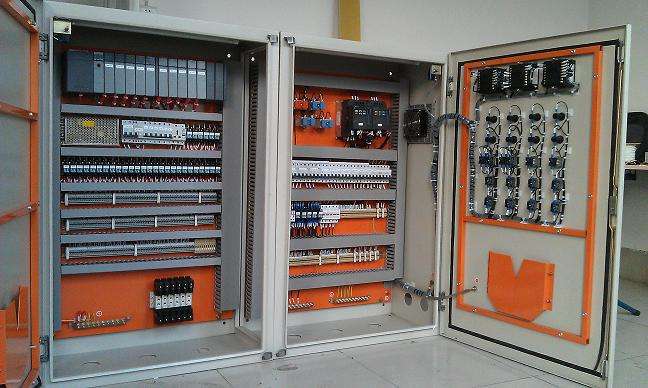The hardware of LSPLC includes power supply modules, I/O modules, field output components, and some wires, wiring terminals and junction boxes. The field input components mainly include travel switches, button switches and intermediate relay output contacts, and the field output components mainly include relays, solenoid valves, contactors, and motors. Common faults in the hardware part include component damage and loose wiring.
LSPLC is a special-purpose computer. Its structure is basically the same as that of a microcomputer. It consists of a central processing unit CPU/memory, input and output I/O modules, and a programmer. The application of PLC is divided into hardware and software parts, so common PLC faults can also be divided into two categories: software faults and hardware faults, among which hardware faults account for more than 80%.

Damage to the components will cause the PLC control system to stop working. When encountering this kind of failure, you only need to replace the same component, but in actual work, the same component is often not found for a while. In this case, the component replacement method should be used to replace the damaged component.
Peripheral circuits go through the control cabinet or operation panel (set) of the PLC control system to the input (output) components, often through the wiring terminal or the intermediate junction box. Due to vibration in use, the wiring or component joints are easy to loosen. malfunction. In order to ensure the reliable connection of such failures, welding methods can be used.
Interference of LSPLC will affect the system signal, resulting in lower control accuracy, loss of internal data in the PLC, malfunction of the machine, and accidents in severe cases.
LSPLC program loss is usually caused by several reasons such as poor grounding, incorrect wiring and interference. In order to prevent the program from being lost, it is also necessary to prepare the program package, and put a complete program into the program package in advance for emergency use.
The interference includes external interference and internal interference. In the field environment, the external interference is random and has nothing to do with the system. The interference source can only be restricted according to the specific situation. The internal interference is related to the system structure. Through careful design of system software filtering and other processing, the interference can be suppressed to the greatest extent. The anti-interference technical measures at the PLC production site are usually considered from the aspects of grounding protection, wiring arrangement, shielding and anti-noise. The most common reason for the PLC's periodic crash is long-term dust accumulation, and the PLC rack slot interface should be cleaned regularly. When cleaning, first use compressed air to blow off the dust in the control board and each slot, and then use 95% alcohol to clean the slot and control board plug. After cleaning, assemble carefully and resume normal operation after restarting.
In short, the maintenance of PLC faults is a very complex problem. In the process of maintenance, various factors should be considered comprehensively, and only by certain methods can the cause of the fault be quickly and accurately determined and eliminated, so that the PLC control system can work normally.
"Non-burning, nicotine for users, low tar content. As the heating temperature (below 500℃) is lower than the combustion temperature of traditional cigarettes (600-900℃), the harmful components produced by tobacco high-temperature combustion pyrolysis and thermal synthesis are reduced, and the release amount of side-flow smoke and environmental smoke (second-hand smoke) is also greatly reduced."
Heating non - combustion products are electronic devices containing tobacco. When you heat them, they produce a nicotine-containing vapor that you can inhale.
They are different from traditional cigarettes and work by heating tobacco to a very low temperature. Tobacco is heated to 350 ° C in a heat-incombustible device, while traditional cigarettes burn at up to 900 ° C.
Still, the temperature at which non-combustion products are heated is high enough to vaporize and inhale harmful chemicals.
Although both are electronic devices, heated non-combustible products are also different from e-cigarettes or steam devices. These usually use chemical liquids and do not necessarily contain nicotine. E-cigarettes tend to heat liquids to around 250 degrees Celsius to produce vapor.
Hnb Device Oem,Hnb Device Patent,Hnb Device,Hnb Device For Sale
Shenzhen MASON VAP Technology Co., Ltd. , https://www.cbdvapefactory.com